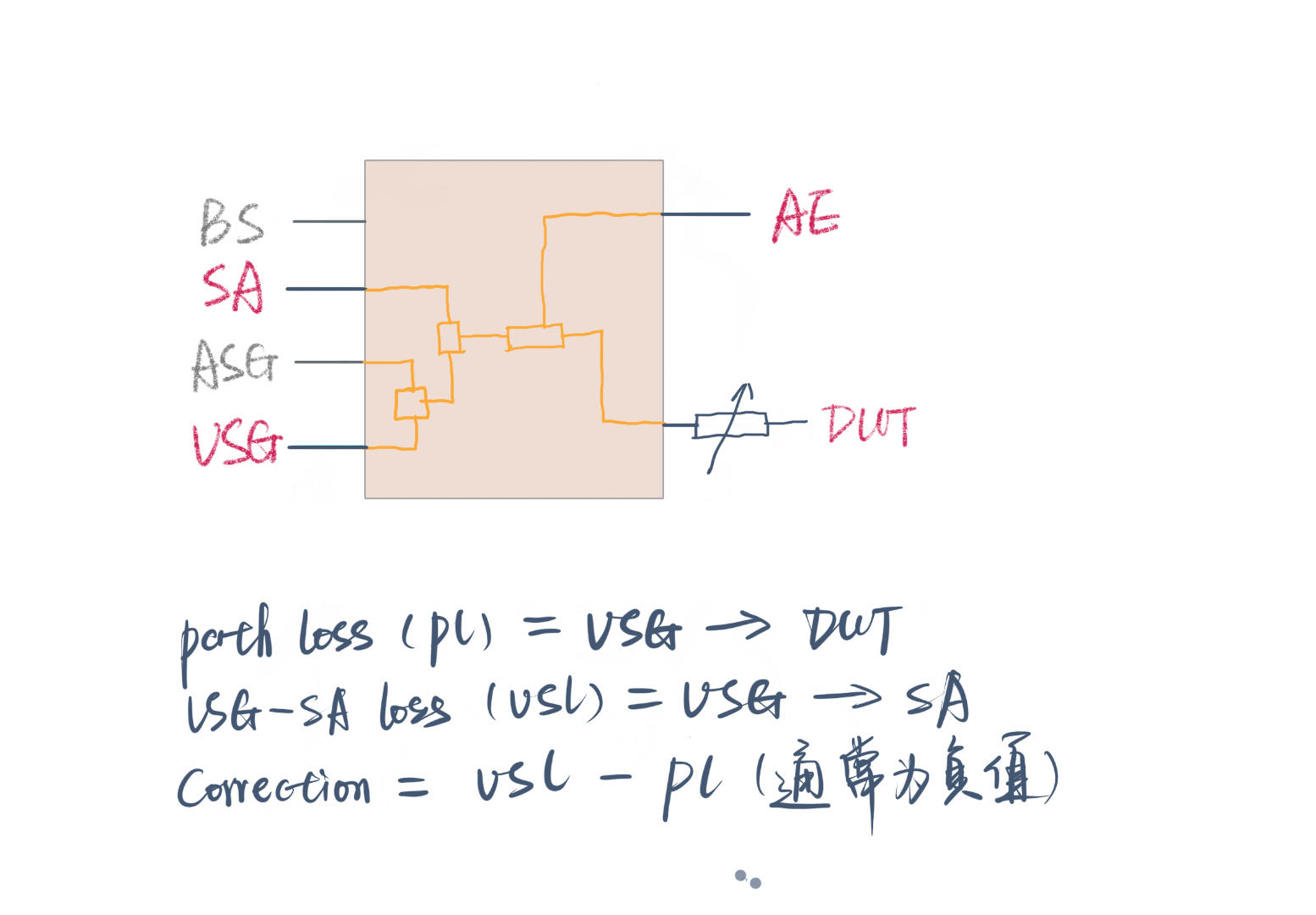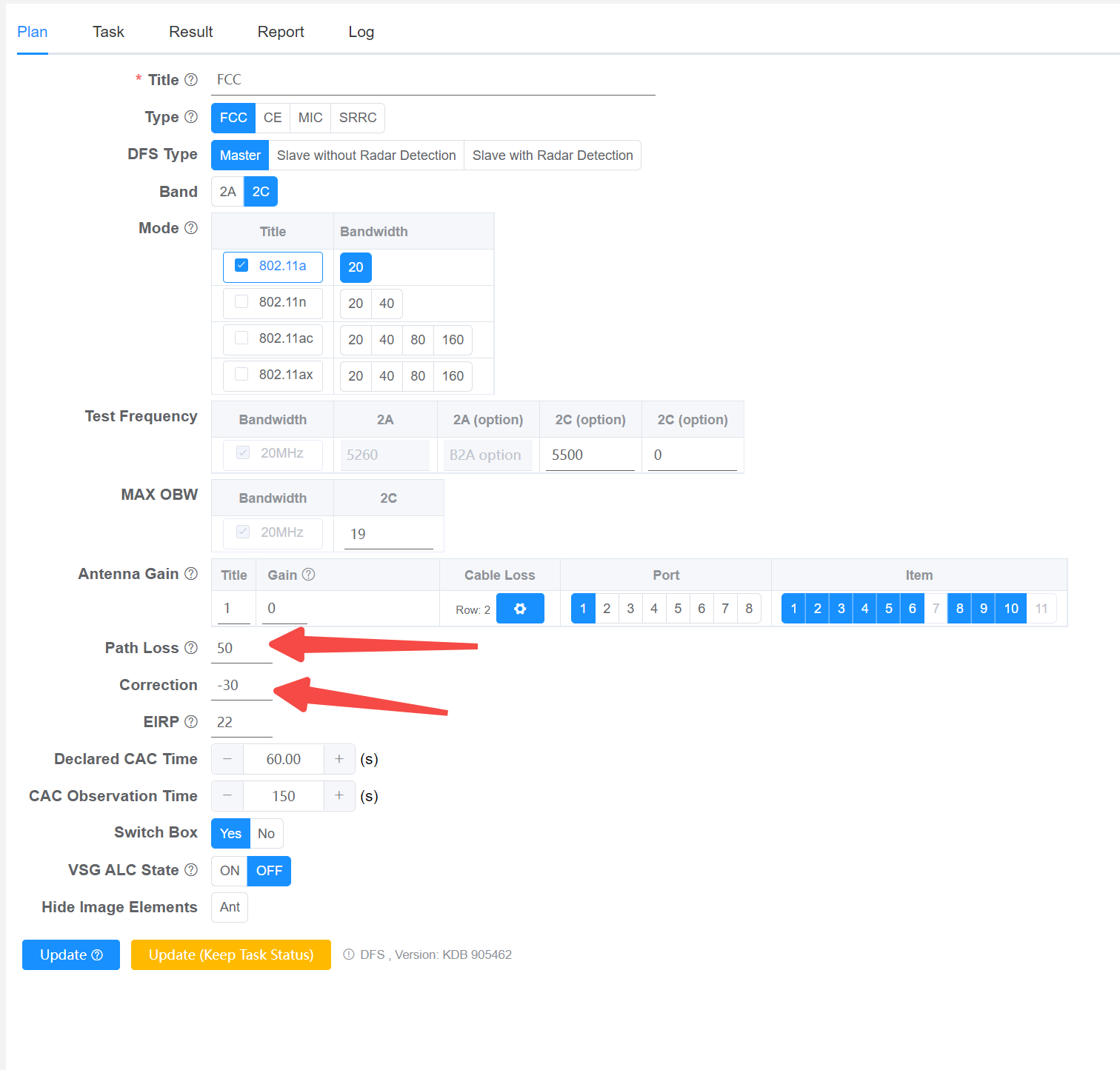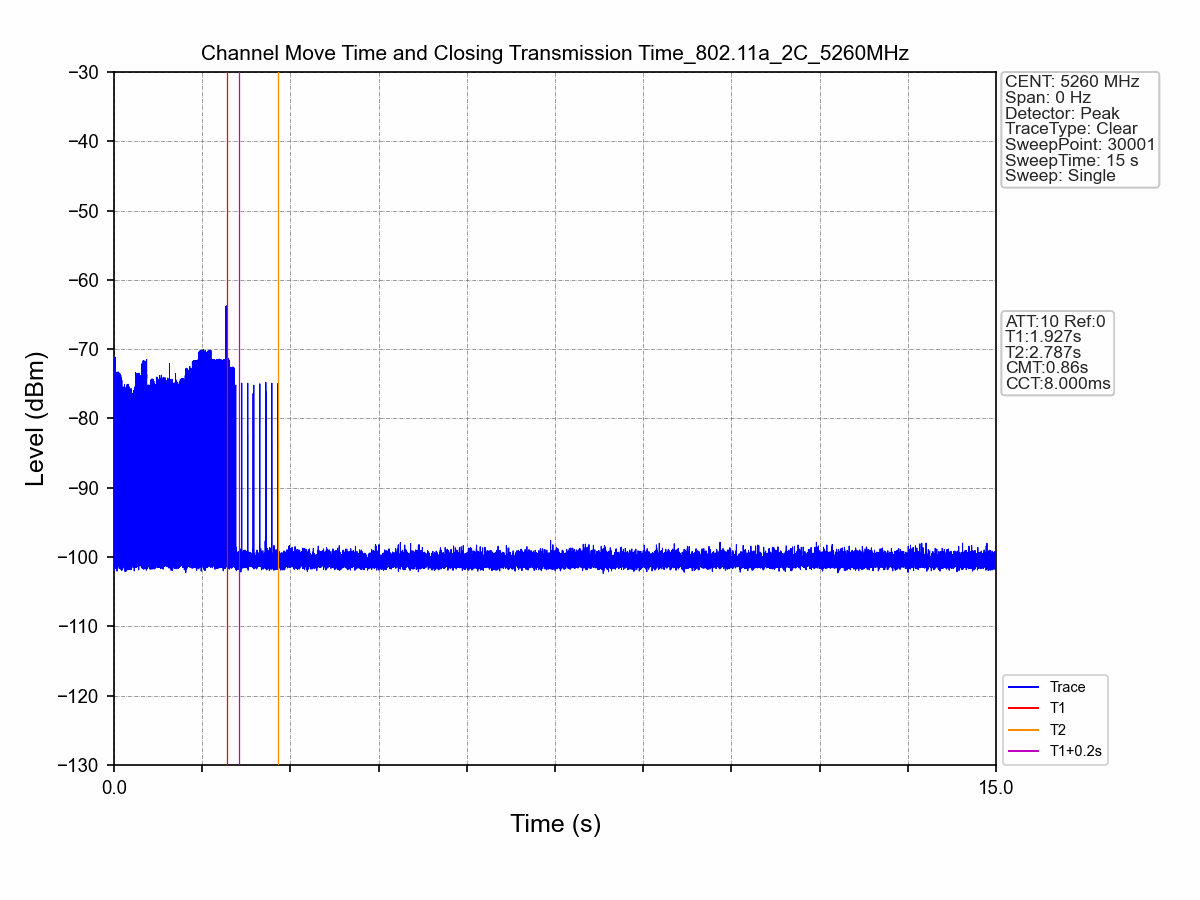DFS Test Standard Operation Procedure
>>> TSTPASS RF Automated Test System
I. Test Instruments
- Vector Signal Generator (VSG)
- Spectrum Analyzer (SA)
- Control Box (for RF path switching) or Power Divider (for manual test link setup)
II. Product and Possible Auxiliary Equipment and Software
- Device Under Test (DUT)
:::warning Notice
Refer to FCC KDB 905462 and EN 301 893. If the product is a Master or Slave without radar detection, the interference signal is directly applied to the Master during measurement. Therefore, for Slave without radar detection, the DUT referred to here is the auxiliary equipment AP (Master) used for testing, not the sample itself.
:::
- Auxiliary Equipment (AE)
If the sample is a Master, the AE is a Slave (e.g., a mobile phone).
If the sample is a Slave, the AE is a Master (e.g., an AP). Note that as mentioned above, if the sample is a Slave without radar detection, the auxiliary equipment Master should be connected to the DUT port during measurement, and the sample should be connected to the AE port.
- Traffic Generation Software (e.g., iperf3)
III. Test Setup Block Diagram

In the diagram above, Path Loss and Correction correspond to the path loss and correction on the TSTPASS system plan page, respectively. 
IV. Adjustable Attenuator and Path Loss
TSTPASS's DFS testing adopts a purely visual processing scheme. The following points require special attention:
- In this scheme, the spectrum analyzer is only used as an observation tool. The strength of all signals displayed on the spectrum analyzer does not equal the actual signal strength.
- During the CAC test, ensure that the DUT is powered on and the system starts testing simultaneously.
- The purely visual scheme is fundamentally different from the trigger scheme used by other test systems. Do not apply the logic of the trigger scheme to the purely visual scheme.
The purely visual scheme and the trigger scheme each have their advantages and disadvantages.
The advantage of the trigger scheme is its simple initial setup and relative ease of understanding. However, its disadvantage is also obvious: radar signals cannot be directly observed in the test data, and the data may be questioned.
The advantage of the purely visual scheme is the intuitive presentation of test data and undisputed results. The disadvantage is that the test setup is relatively complex and has a higher learning curve. However, once mastered, it provides a more thorough understanding of the entire DFS test.
The only requirement of the purely visual scheme is that the radar signal seen on the spectrum analyzer (SA) must be at least 6dB higher than the DUT signal. This is also the most difficult part to understand.
Taking FCC as an example, if the EUT's EIRP is less than 23dBm (assuming it is 22dBm), the radar signal strength applied during the test should be -62 + 1dBm = -61dBm. If the two are directly connected to the spectrum analyzer (SA), the radar signal strength will be approximately 83dB lower than the EUT signal strength (22 - (-61) = 83dB), which cannot meet the most basic requirements of the visual scheme.
However, observing the setup diagram above, it can be found that in the actual setup, the signal strength of the EUT displayed on the spectrum analyzer can be changed by adjusting the value of the adjustable attenuator (ATT) at the EUT front-end. Assuming the ATT is increased by 20dB, we will see the following phenomena:
- The signal strength of the EUT observed in the SA will decrease by 20dB.
- The path loss from the VSG to the EUT will increase by 20dB. To ensure that the signal strength reaching the EUT antenna remains at -61dBm, the signal strength of the VSG must also be increased by 20dB accordingly.
- Because the path loss between the VSG and the SA remains unchanged, the signal strength of the VSG observed in the SA will increase by 20dB accordingly.
So at this time, the difference between the VSG signal and the EUT signal in the SA is reduced to (22 - 20) - (-61 + 20) = 43dB. Similarly, by continuing to increase the value of the ATT, the radar signal strength - EUT signal strength = 6dB requirement of the visual scheme can eventually be achieved.
Measure the path loss between the VSG and the EUT input at this time. This is the Path Loss.
Correction literally means the correction value. In fact, this value is used to correct the radar signal strength observed in the SA. Assuming the required radar signal strength is -61dBm, and the radar signal strength observed in the SA is -20dBm, then the Correction is -41. The system will import this correction value into the data obtained from the SA, so that the radar signal strength in the finally presented data is -61dBm.

